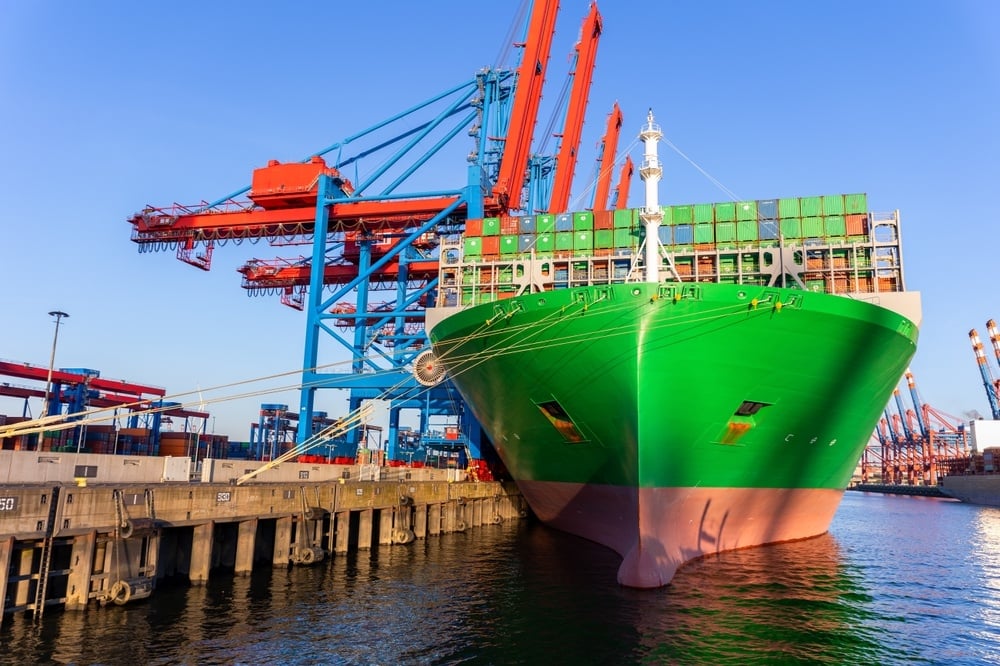
As a new strike approaches, the ILA union and port owners met in secret to discuss automation
Key members of the United States Maritime Alliance and the International Longshoremen’s Association met in secret on Sunday to try to reach an agreement between port ownership and the dockworkers’ union on the contentious topic of automation and semi-automation. The conference resulted in a document that highlights the importance of creating new human jobs to support any new port technology.
The eight-hour discussion was held in advance of the eagerly awaited formal bargaining resumed, with a deadline of January 15 to prevent a new dockworkers’ strike. Language on automation was drafted to support the entire negotiating committee review process scheduled for Tuesday, according to individuals close to the negotiations who were asked to remain anonymous because of the delicate nature of the discussions, which had recently broken down over the issue.
However, the sources went on to say that the wording might raise fresh worries about higher labor costs and additional obstacles to reaching a full wage and automation agreement.
Participants in the discussion included representatives from port terminals that currently use the technology in question, such as the NIT Terminal, which is a part of the Port of Virginia, and rail-mounted gantry (RMG) cranes at container terminals in Bayonne, New Jersey, which is a part of the Port of New York and New Jersey. USMX CEO Paul Demaria, Gateway Terminals President Kevin Price, Port of Virginia Chief Operations Officer Joe Ruddy, GCT USA President John Atkins, and Maher Terminals Executive Vice President of Operations Anthony Ray were among the executives present at the meeting. Virgil Moldonado, president of the NY/NJ chapter of the ILA 1588, ILA President Harold Daggett, and his son Dennis, executive vice president of the ILA, represented the union.
The agreement stipulates that “there is a commitment by the parties to research and utilize all technology that would assist an operator in being more efficient and productive” and that the ILA retains the right to add union workers in the future to supplement any new technologies.
According to the document, competent human crane operators have demonstrated their capacity to manage port operations requiring accuracy with the help of contemporary crane control technology. The crane’s technology incorporates motion-dampening controls, anti-sway technology for accurate container placement, and cameras and alignment guidance.
Semi-automated rail-mounted gantry crane operations are discussed in the document, “where humans control complex tasks while automation handles repetitive motions.”
Additionally, it mentions manual RMG operations, when union workers manually operate the cranes without the use of automation. Furthermore included were real-time feedback systems, obstacle detection systems, and loading positioning sensors as instruments that “enable human operators to achieve precision comparable to automation.”
According to port insiders, important issues still need to be hammered out, even though the suggested language on automation suggests that the USMX is willing to give in to certain union worries over jobs.
USMX sources are worried about additional labor expenses that don’t fairly represent port economics and needs, which will eventually affect the supply chain and end up in the hands of the customer.
“The rub is, what are deemed as necessary jobs?” A terminal operator said. “Is the job truly necessary or is it a job being created for the sake of adding a worker?”
The port operator stated, “The shipper’s price of services is increased to cover these additional jobs.” “The shipper then passes these expenses on to the customer. That’s how inflation is defined.
Regarding the meeting, the ILA chose not to comment.
Whether the entire USMX negotiation team will agree to document language on automation or risk another strike is still up in the air.
“We are at an inflection point,” a USMX member stated. “If either side cannot come to an agreement and there is a strike, it is a roll of the dice for either side to see if a better agreement could be carved out if there was government intervention.”
Donald Trump, the incoming president, recently expressed his strong support for the union’s automation stance.
The USMX member stated that the provisional 62% salary increase that the USMX agreed to in October to end the first strike “should be off the table” if the proposed automation terms, which require any new port technology to be matched by new jobs, are accepted by the entire USMX.
“Keeping automation at status quo arguably eliminates the ability to pay for the increase,” the member of the USMX stated. “So this is part of the internal discussion and will be part of the carriers’ consideration on whether to accept the deal discussed yesterday.”
According to the working document, if the parties are unable to agree on the use of what is referred to as “Operator Assisted Technology,” the matter will be referred to the union and ports’ technology committee process, which is made up of Harold Daggett, his two sons, Dennis and John, and five other members from each side. If arbitration is required, that is the last step.
Although local union chapters would negotiate over personnel additions related to new technologies, the ILA’s national office would have the last say.
The terminal operator stated, “The Daggett’s ultimately control all of these decisions.” “This contract continues to increase Daggett’s leverage in the union by deciding how many people get hired and which one of those lucky enough to be hired gets the biggest paycheck.”
